 |
 |
 |
| |
Long-term ART initiated during primary HIV-1 infection limits the HIV-1
reservoir size but not to levels found in LTNPs
|
| |
| |
......"Our data demonstrate that long-term early treated patients have smaller reservoir size as compared to patients treated during chronic infection, however not reaching levels found in LTNP.....Significantly lower levels of total (p=0.041) and integrated HIV-1 DNA (p=0.003) were detected in early as compared to chronically treated patients, however these were higher than those found in LTNP (Fig.1a, 1b)."
Reported by Jules Levin
IAS 2015 Vancouver
Eva Malatinkova, Ward De Spiegelaere, Pawel Bonczkowski, Maja Kiselinova, Karen Vervisch, Wim Trypsteen, Margaret Johnson, Chris Verhofstede, Danny de Looze, Charles Murray, Sabine Kinloch-de Loes, Linos Vandekerckhove
HIV Translational Research Unit (HTRU)
Ghent University, Ghent, Belgium


Program Abstract
Background: Early initiation of long-term antiretroviral therapy (ART) may lead to viral control after treatment discontinuation. Recent evidence indicates that ART initiated within seroconversion limits the HIV-1 reservoir size. Insight into the reservoir in patients with different timings of ART as well as those who can control HIV-1 without therapy should further inform new treatment strategies.
Methods: A cross-sectional study of HIV-1 reservoir size (total and integrated HIV-1 DNA) and dynamics (2-LTR circles and cell-associated HIV-1 unspliced RNA (usRNA)) was performed in peripheral blood mononuclear cells (PBMCs) in 84 HIV-1 infected patients from 4 cohorts in 2 clinical centers (London, UK and Ghent, BE): long-term treated patients with ART initiated during seroconversion (SRCV on ART; n=25) or chronic infection (Chronic ART; n=32), long-term non-progressors (LTNP; n=17) and ART-naïve recent seroconverters (Recent SRCV; n=10). Total HIV-1 DNA, 2-LTR and usRNA were measured by ddPCR and integrated HIV-1 DNA by Alu-HIV PCR. Clinical parameters including time on ART and aviremia, CD4 count and CD4/CD8 ratio were collected.
Results: Median total HIV-1 DNA copies were: 92, 48, 137 and 1901 c/106 PBMCs in SRCV on ART, LTNP, Chronic ART and Recent SRCV, respectively. Significantly lower levels of total (p=0.041) and integrated HIV-1 DNA (p=0.003) were detected in early as compared to chronically treated patients, however these were higher than those found in LTNP (Fig.1a, 1b). Interestingly, similar levels of integrated HIV-1 DNA were found in Recent SRCV compared to the Chronic ART cohort (p=0.104), confirming very fast seeding of the reservoir (Fig 1b). Levels of usRNA were significantly lower in early compared to chronically treated cohort (p=0.007), indicating a lower transcriptional activity in early treated patients and similar to LTNP (p=0.615). Furthermore, early treated patients exhibited a higher CD4/CD8 ratio compared to chronically treated patients (p=0.009), suggesting lower levels of residual immune activation.
Conclusions: Our data demonstrate that long-term early treated patients have smaller reservoir size as compared to patients treated during chronic infection, however not reaching levels found in LTNP. Interestingly, the reservoir dynamics in terms of 2-LTR and usRNA as well as the CD4/CD8 ratio in early treated patients are comparable to LTNP.


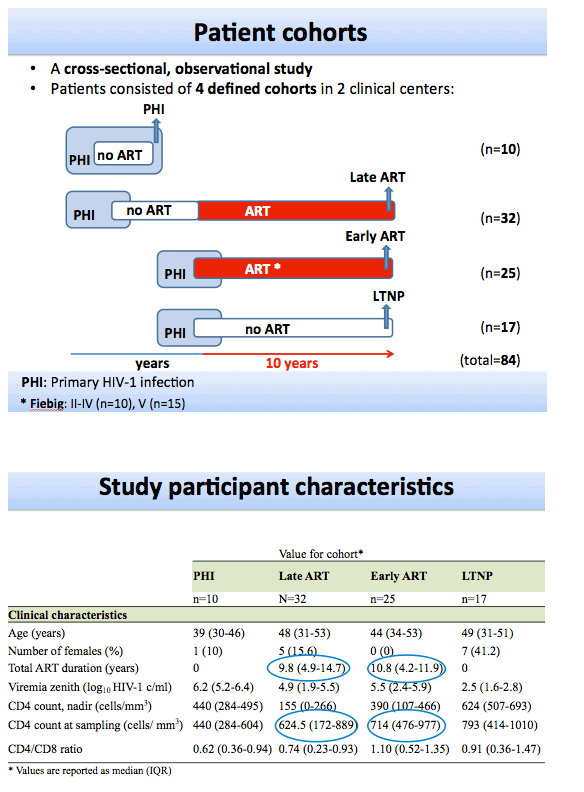
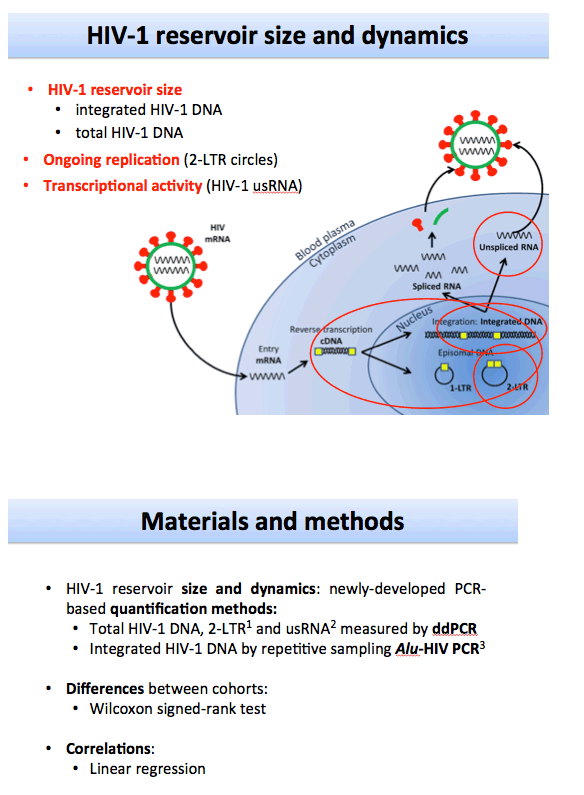
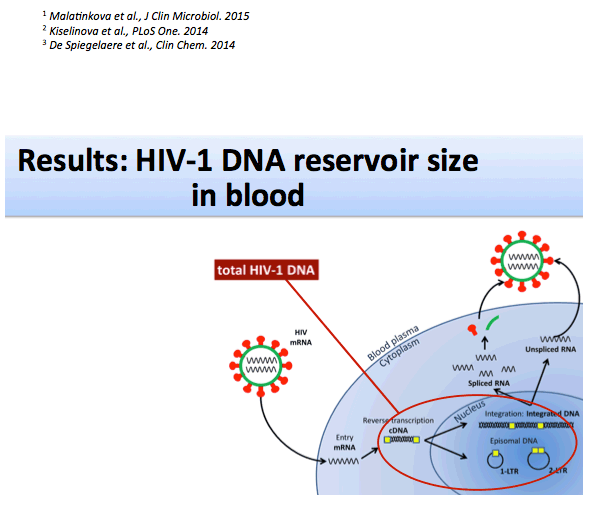
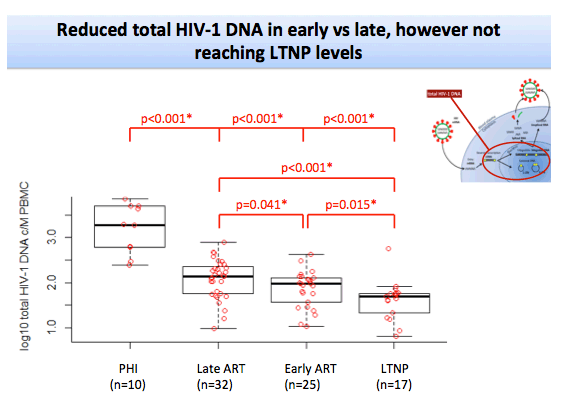
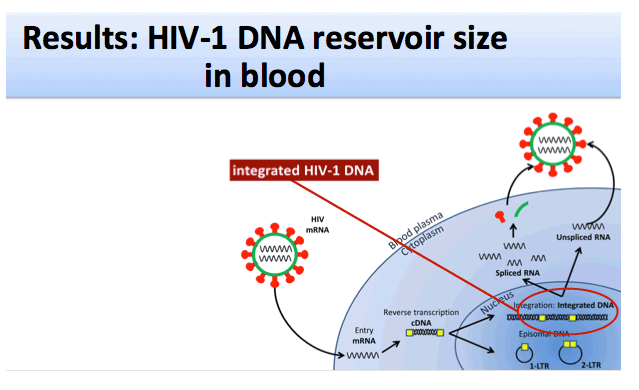

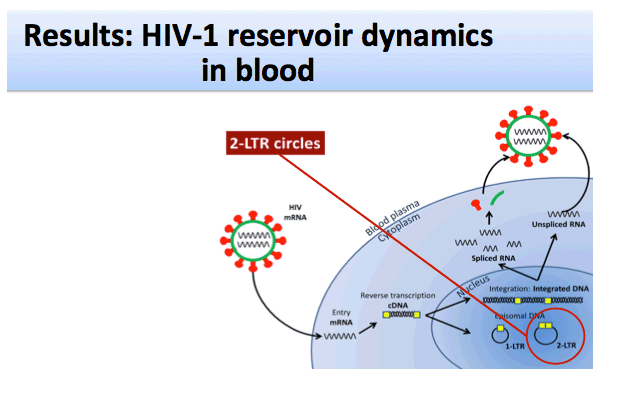
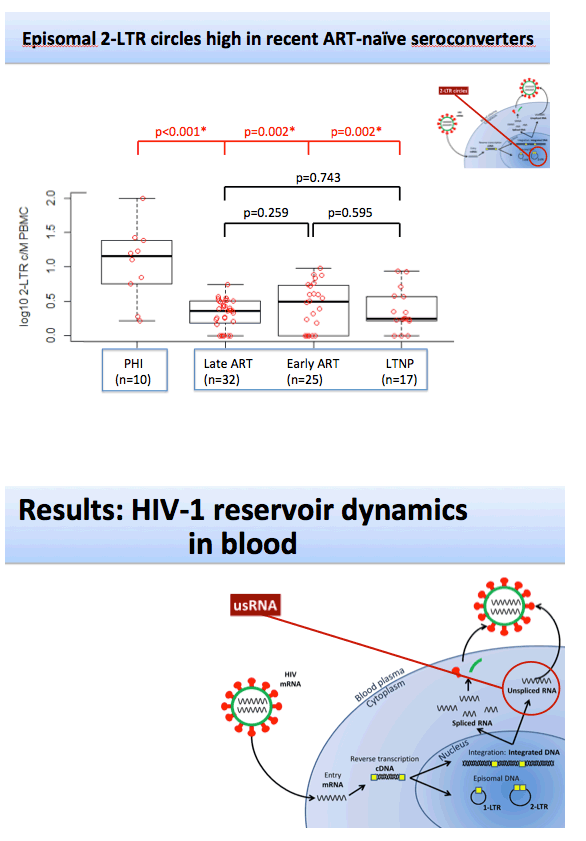
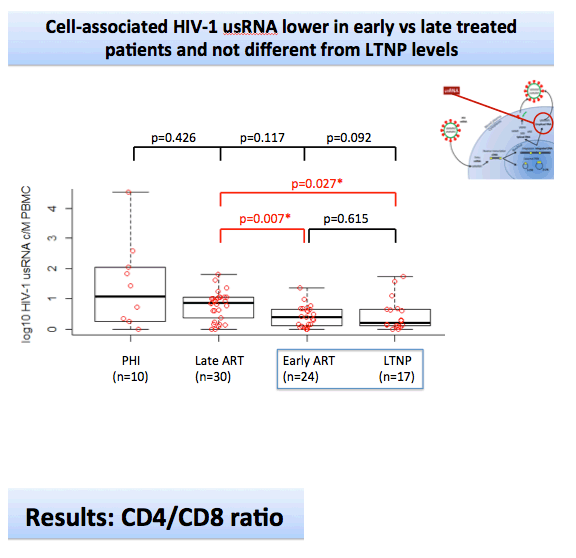
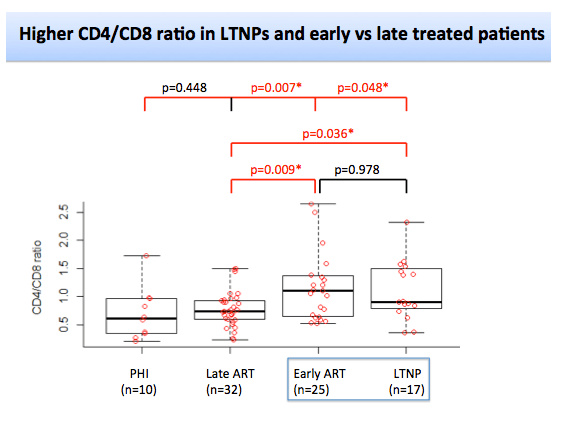


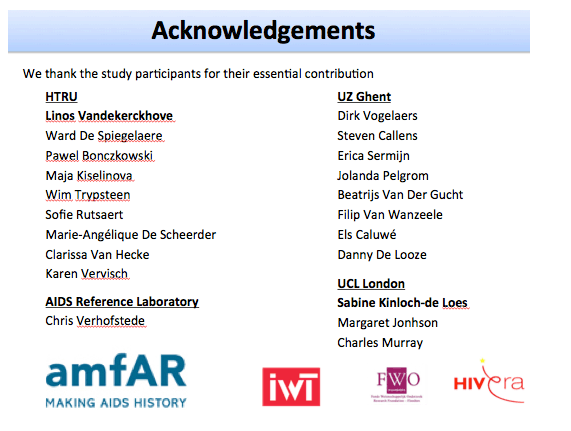
|
| |
|
 |
 |
|
|